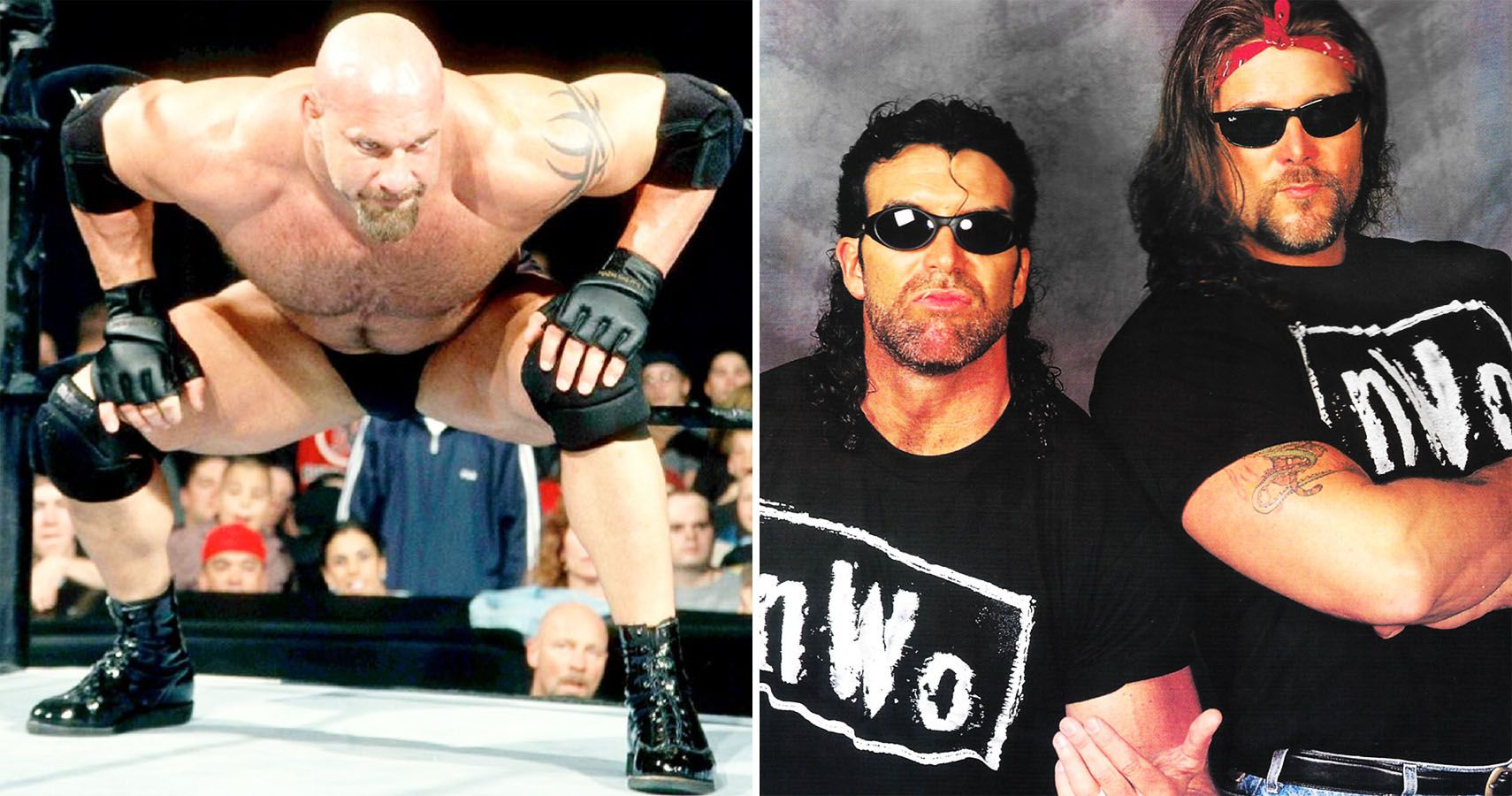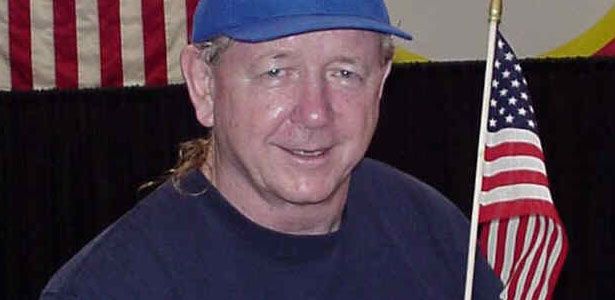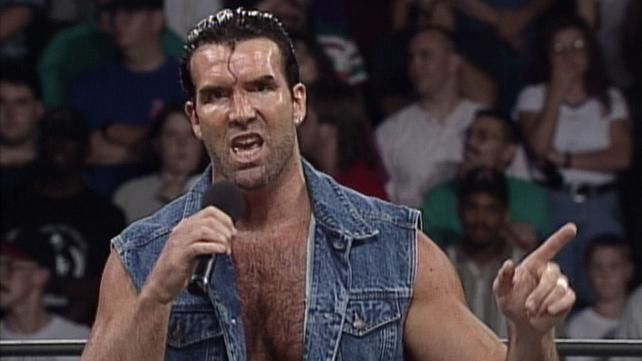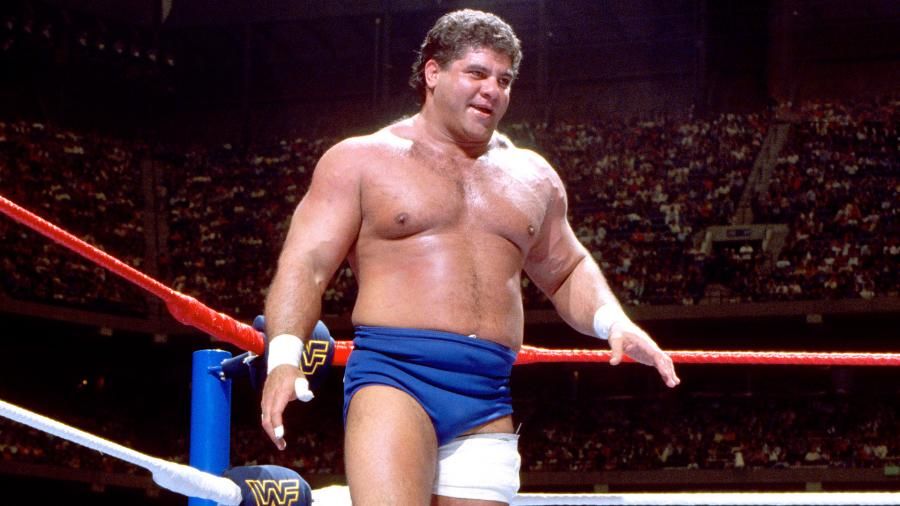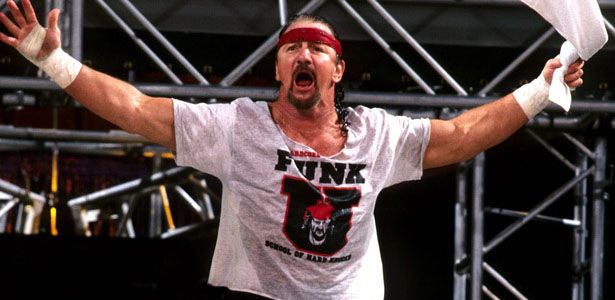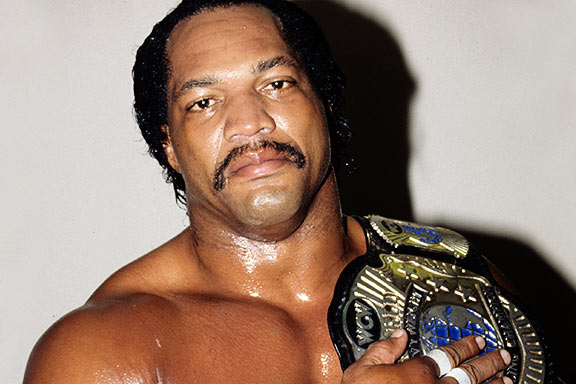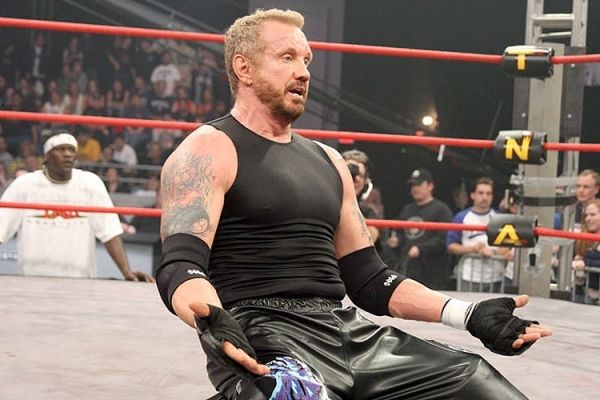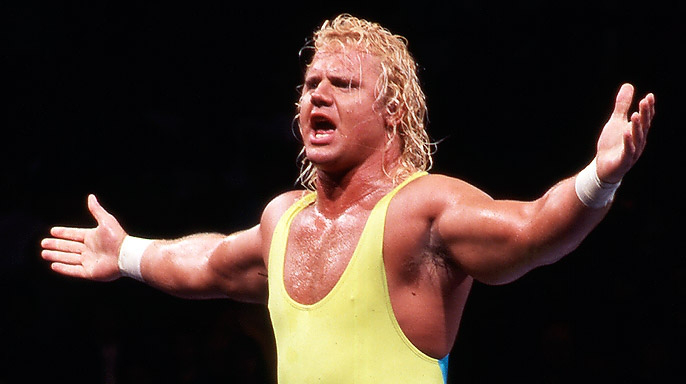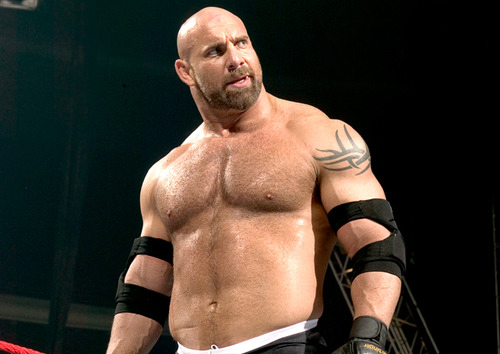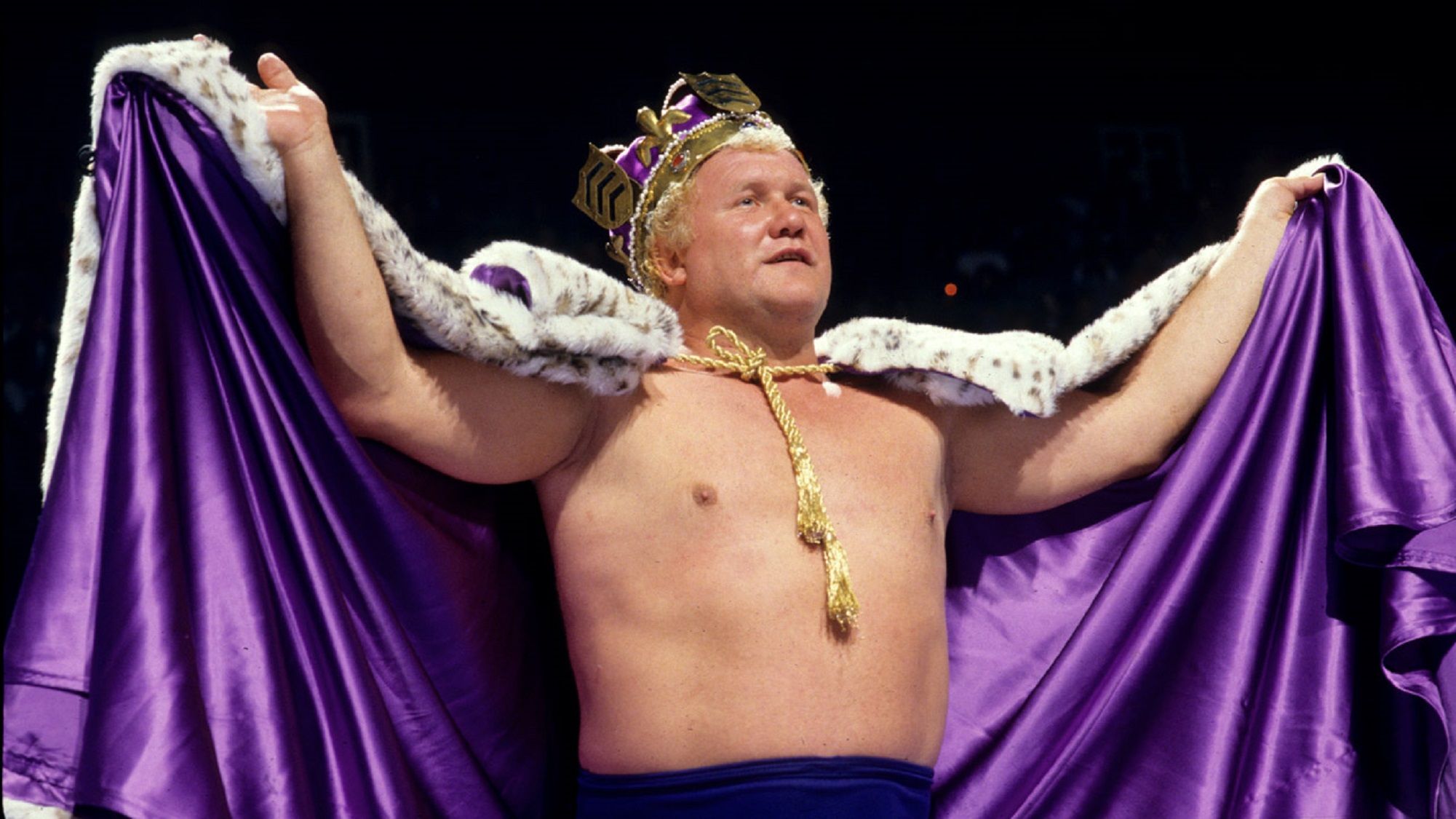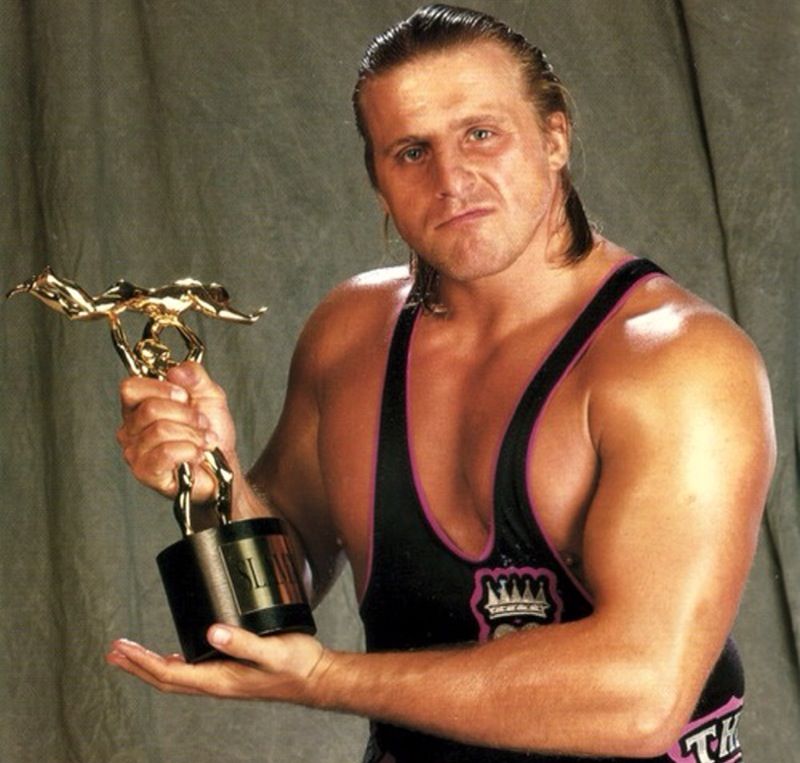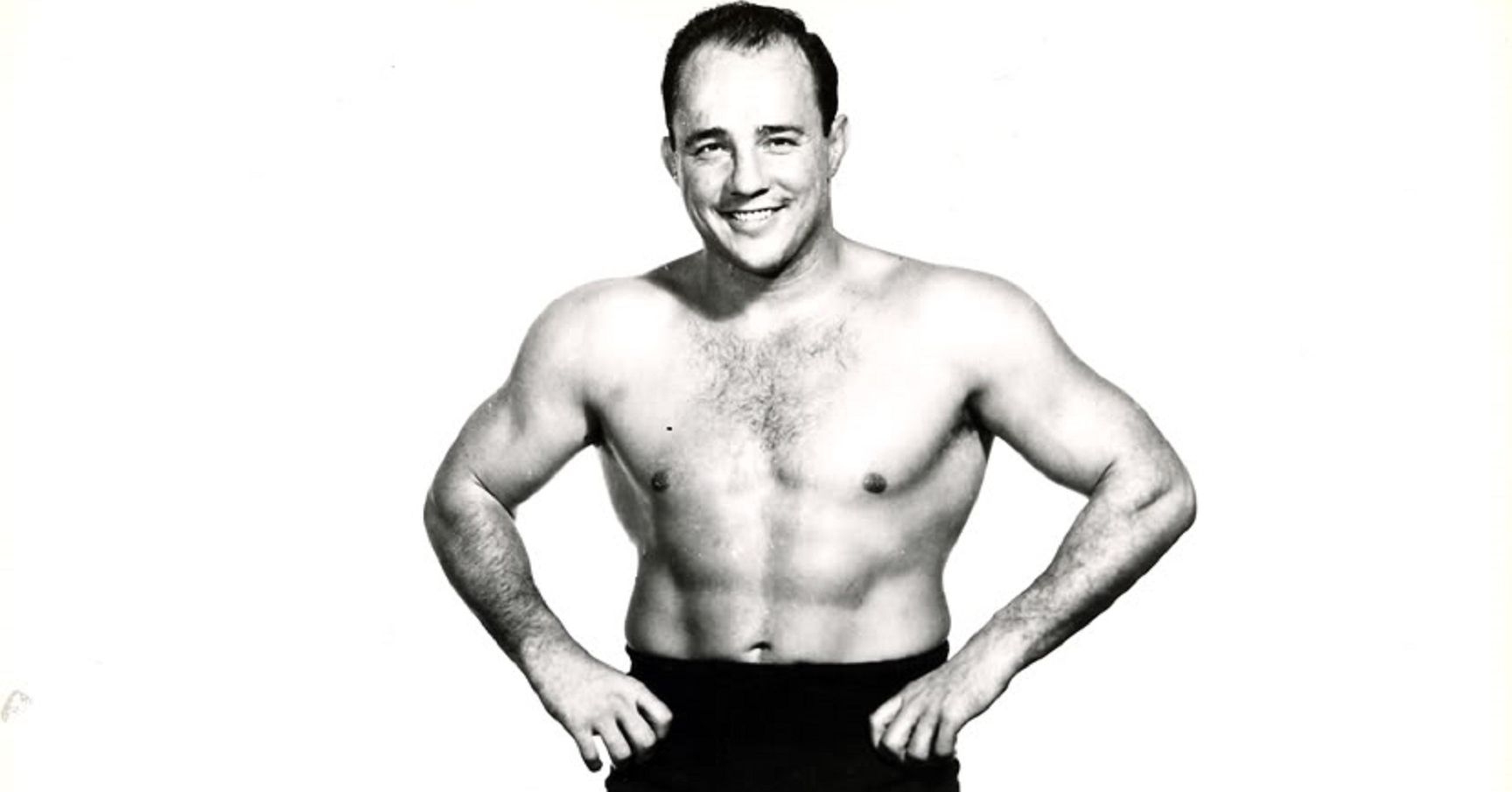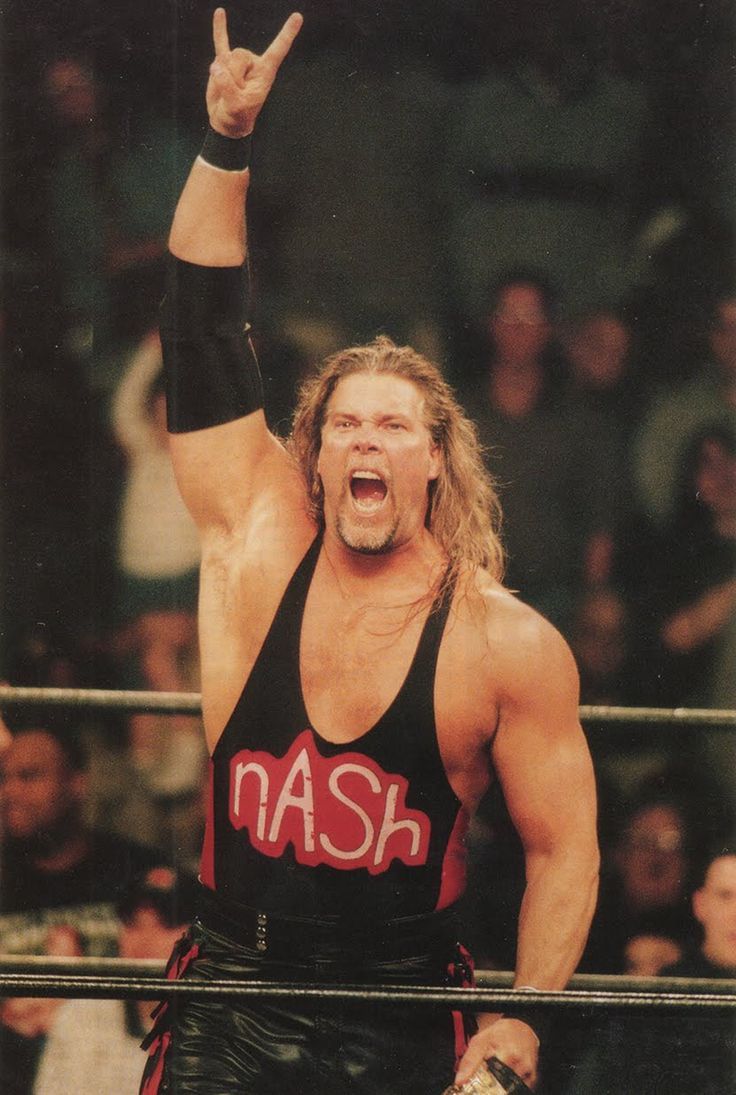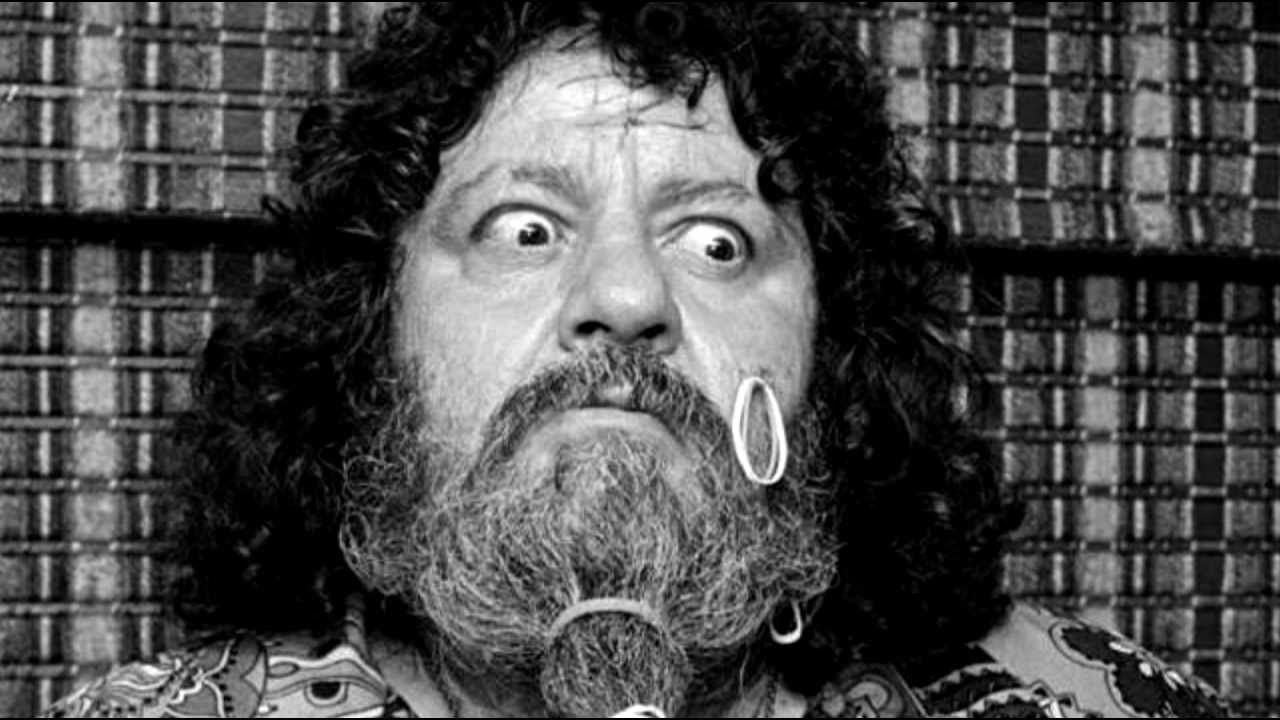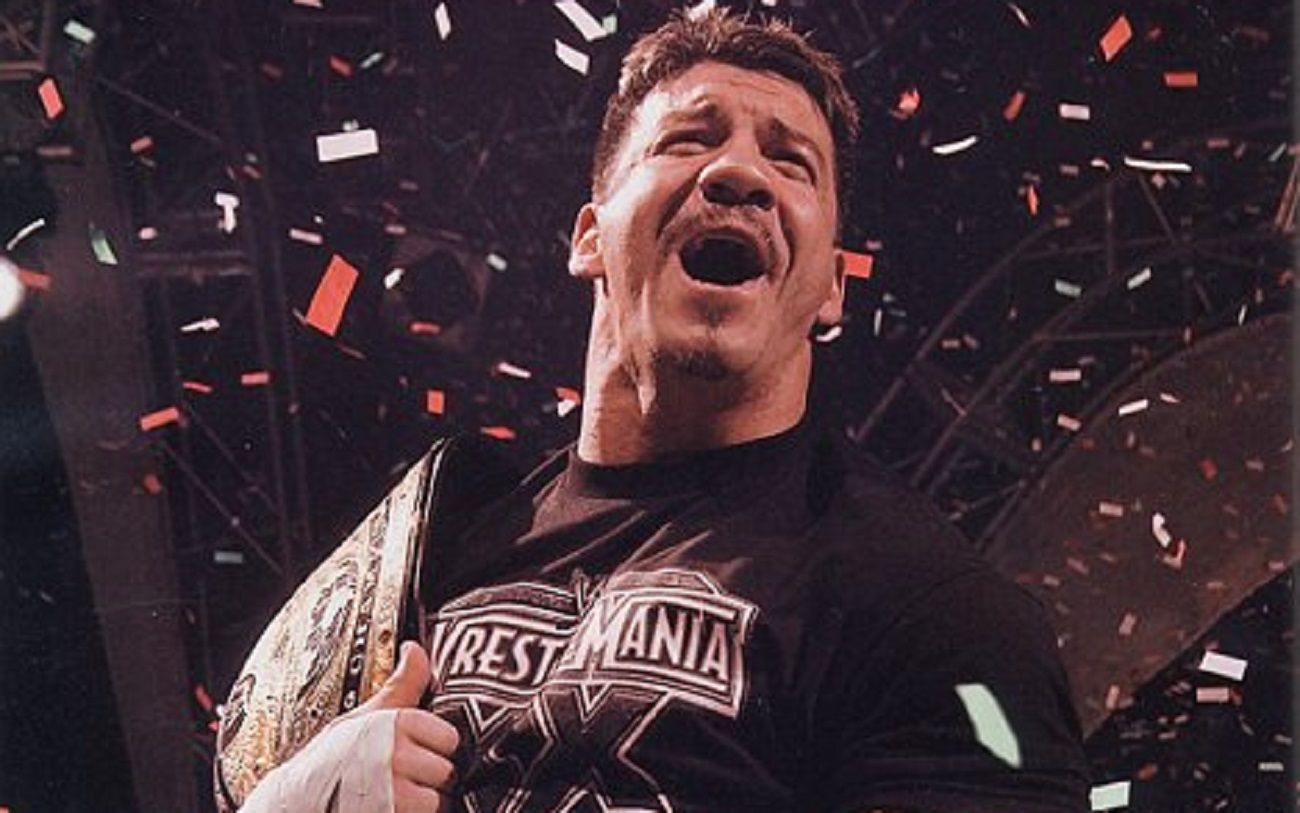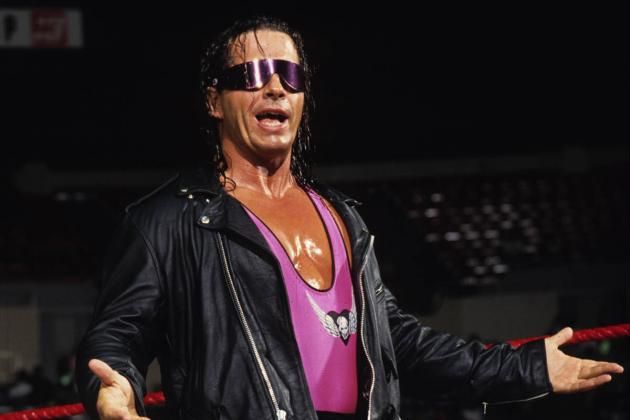Think of some of the biggest names in professional wrestling history. If you picked someone like “Stone Cold” Steve Austin, Hunter Hearst Helmsley (Triple H) or even Edge, those are all names that were given to a wrestler. However, there are a number of great superstars who have competed using their real names.
Currently, the big stars who own their names include John Cena and Kurt Angle. Other superstars are not so fortunate. Usually, wrestling promotions want to own the trademark to a wrestling name and persona. That’s why Kenta Kobayashi – better known in Japan as KENTA – was given the name Hideo Itami. But obviously, a company like WWE can’t really own the rights to a wrestler’s actual name.
However, there seems to be a growing trend in the WWE allowing superstars to use the names that made them famous before coming to the WWE. While AJ Styles and Samoa Joe did not have these personas on their birth certificate, wrestlers like Bobby Roode and Shinsuke Nakamura are currently on the WWE Network under the NXT developmental brand.
While it isn’t as common as the older days of professional wrestling, it is still something that takes place. Some of the greatest legends in professional wrestling history were able to make their biggest impacts in the industry while performing under their real names.
This list provides the top 15 wrestling legends to do so – spanning different generations of wrestling history.
15 15. Dory Funk Jr.
Terry Funk had a great teacher in his brother Dory Funk, Jr., who was credited as the innovator of the Cloverleaf submission hold. His career started after he played college football for West Texas State University. Just one year after joining the NWA in 1968, Dory Funk Jr. would claim the NWA World Heavyweight Championship, after defeating Gene Kinsiski. Funk would hold onto the title for more than four years during a time in wrestling in which titles were held for longer periods of time.
Funk was a big star for the NWA during his time competing in the Mid-Atlantic and Central parts of the United States. His best matches involved rivalries with names like Harley Race and Jack Brisco. But his final years in wrestling involved teaming with his brother Terry, and the two had several tag team championships under the NWA banner in the 1980s. All of this was achieved under Funk's real name.
14 14. Scott Hall
While he never won a major world heavyweight championship during his professional wrestling career, Scott Hall had a storied career that started in the American Wrestling Association and other smaller promotions under his real name. But when he first came into the WWE in 1992, he was billed as the “bad guy,” Razor Ramon. He had been one of the top men to hold the Intercontinental Championship – back when it was almost like a second world championship.
But he returned to using his real name when he made the leap to WCW in 1996 with Kevin Nash and eventually formed the New World Order. While he didn’t have a world title run in WCW, he won plenty of gold with seven tag team title reigns. His addictions led to him having troubles that cost him employment with WWE and also TNA. His deteriorating health cost him a chance to leave wrestling on a positive note, but this is a chance to recognize the highlights of his career that landed him in the WWE Hall of Fame in 2014.
13 13. Don Muraco
Don Muraco was one of the stars from the 1970s after wrestling for various promotions in the United States and Canada. His big break in the industry came when he faced off against NWA World Champion Jack Brisco in 1974 – someone to whom he was compared in terms of physical shape and abilities – where he reversed Brisco’s signature Figure Four Leglock. Muraco would eventually make the move to the WWE in 1981, which showed signs of success at first.
Muraco would win the Intercontinental Championship from Pedro Morales before the two had one of the most memorable and bloody feuds. Muraco would also challenge Bob Backlund for the World Championship multiple times in the early 1980s.
Muraco would not win a world title until he worked for Eastern Championship Wrestling in 1992 – before the company became the ECW we all know. But he would be an inspiration to guys like the Dudley Boyz and Tommy Dreamer for his infamous cage match with Jimmy Snuka from 1983.
12 12. Terry Funk
While he was trained by Dory Funk Jr., Terry Funk was able to make his own mark in the world of professional wrestling with a much different style than the previous members of his family. He began in a tag team with his older brother Dory, as they were part of the National Wrestling Alliance through the late 1960s and 1970s. Terry Funk would win the NWA World Heavyweight Championship with a win over Jack Brisco to start a 14-month reign.
But over the years, Funk would find himself taking his brawling style into the world of hardcore wrestling. Between stops in WWE and ECW, Funk was a part of several hardcore matches that included just about every type of weapon and stipulation imaginable, even a tag team dumpster match where he and Mick Foley defeated the New Age Outlaws. The blood he spilled was not in vain, as he was honored with induction into the WWE Hall of Fame in 2009.
11 11. Ron Simmons
After playing college football at Florida State University, Ron Simmons would make the jump to the world of professional wrestling. He was trained by Japanese wrestler Hiro Matsuda before making his WCW debut in 1989 – back when it was part of the National Wrestling Alliance and Jim Crockett Promotions. A few years later, he would become the first African American to win a World Heavyweight Championship after defeating Vader in 1992. However, many fans know Simmons better for competing in the WWE as Farooq.
He was part of the Nation of Domination before teaming with John “Bradshaw” Layfield to form the APA. Simmons would win the World Tag Team Championship three times with Bradshaw. But his final years with the company involved him walking into different situations that warranted his catchphrase, “Damn!” At the end of the day, Simmons was deserving of his induction into the WWE Hall of Fame in 2012.
10 10. Diamond Dallas Page
Dallas Page was someone who first joined professional wrestling at a later age, though he had a rough start at age 23, due to poor training at the time. He would run a nightclub while acting as a manager for several stars like Colonel DeBeers and Curt Hennig, but he would eventually get a chance to learn under Dusty Rhodes and other trainers for World Championship Wrestling’s Power Plant.
In 1991, he made his official debut as a professional wrestling and he was quite the star in WCW for that next decade. Under the name Diamond Dallas Page, he won the WCW World Heavyweight Championship three times, the United States Championship two more times and enjoyed one run with the Television Championship. After a brief stint in WWE, he would move on to the world of fitness and develop the very successful DDP Yoga. He would be the first to tell you his post-WCW life wasn’t a bad thing; it was a good thing. Post WCW Page, whose birth name was Page Falkinburg, legally changed his name to Dallas Page, meaning that he wrestled under his real name during his stints in WWE and TNA.
9 9. Curt Hennig
Curt Hennig had a nearly perfect career that was only missing a run with a World Heavyweight Championship. Still, he was definitely one of the most enjoyable talents in the WWE back in the 1980s and 1990s under the “Mr. Perfect” nickname. Hennig was considered one of the best technical wrestlers in wrestling history that included some entertaining vignettes wherein he showed how perfect he was as an overall athlete. During his initial run with the WWE, he was a two-time Intercontinental Champion.
In 1997, Hennig decided to make the jump to WCW during the Monday Night War, where he did win the United States Championship and the World Tag Team Championship. But Hennig found the most success in the WWE as one of the top wrestlers recognized by Pro Wrestling Illustrated in the early 1990s. The unfortunate "Plane Ride from Hell" led to him being fired from the WWE in 2002. His sudden passing was unfortunate, considering he never had a chance to be a main event superstar.
8 8. Bill Goldberg
When you think about it, chanting any name other than 'GOLDBERG, GOLDBERG' when talking about this beast would have just been wrong.
Before the world of professional wrestling, Bill Goldberg played in the National Football League for a few years. Eventually, he was training at the WCW’s Power Plant. He looked like someone who was meant to be a “local competitor” during a match with Hugh Morris back in 1997. While looking very basic with black trunks and matching boots and pads, he dominated the WCW competition that led to a streak of 173 wins, which spanned from 1997 to 1998.
Goldberg was a very basic character and he operated as one of the biggest stars in WCW during the Monday Night Wars. Between both WWE and WCW, he had three separate World Heavyweight Championships before he left professional wrestling in 2004. Fans who grew up in the 1990s are hoping he might come back for one more match as a way of ending his career on a high note – at least more so than the WrestleMania XX bout against Brock Lesnar.
7 7. Harley Race
Harley Race was one of those golden age professional wrestlers who was a big star during the territory days of the industry. While winning several regional championships in the Mid-American and Southern parts of the United States, he would win the National Wrestling Alliance’s World Heavyweight Championship eight times. His career also included five tag team championship reigns with the American Wrestling Association back in his native Midwest.
Race also spent some time wrestling for both WWE and WCW in the 1980s. When he retired in 1991, he found a new way to work in professional wrestling. In 1999, he formed World League Wrestling out of his home state of Missouri and opened a wrestling academy. Many of the students had a chance to learn from guest coaches like Bret Hart, Mick Foley and even Mitsuharu Misawa. One of his star pupils he was credited for training was former WWE World Tag Team Champion Trevor Murdoch.
6 6. Owen Hart
Owen Hart is not the most accomplished name from the Hart family. It is hard to one-up the brother who will be mentioned later in this list. But Owen Hart was a great professional wrestler in his own right that worked for both New Japan Pro Wrestling and World Championship Wrestling before coming to the WWE. He was able to fit into a variety of roles the creative team gave him.
Whether it was teaming or competing with his brother, joining the Nation of Domination or saving the day as the Blue Blazer, Owen Hart was a talented technician. While he never won a world championship, he would collect the European and Intercontinental Championships. He also had four different runs as a WWE Tag Team Champion with three different partners. If it wasn’t for his tragic death in 1999, he could have been a main event star when all was said and done.
5 5. Verne Gagne
Verne Gagne competed in professional wrestling during a time when most wrestlers competed under their real names. Gagne established himself as an outstanding athlete growing up in Minnesota and even played in the NFL with the Chicago Bears before George Halas made him choose between wrestling and football. Gagne chose wrestling during a golden age in the 1950s when pro wrestling was starting to make a debut on television.
During his 32 years in wrestling, Gagne would find success under the American Wrestling Association that he helped build. As a competitor, he won the AWA World Heavyweight Championship 10 times and the AWA World Tag Team Championship five times. But Gagne’s contributions to wrestling surpassed competition. He was also a trainer that helped give names like Jimmy Snuka, Ric Flair, Curt Hennig, Blackjack Mulligan and Ricky Steamboat a start in the U.S. wrestling scene. He was named to the Lou Thesz/George Trago Professional Wrestling Hall of Fame in 1999 and the Professional Wrestling Hall of Fame in 2004 before receiving WWE’s equivalent honor in 2006.
4 4. Kevin Nash
Kevin Nash competed in the world of professional wrestling under various aliases. There were short-term stints as Steel, Oz and Vinnie Vegas before finding a niche as Diesel in the WWE during the 1990s. However, he found the most success in wrestling after making the jump from the WWE to the WCW with Scott Hall. Under his real name, he formed one of the greatest factions in wrestling history with Hall and Hulk Hogan – the New World Order.
During his time with WCW, he would win the World Tag Team Championships nine different times – most of which came with Hall (six), followed by Sting (two) and Sting (one). He also won the WCW World Heavyweight Championship five times, including one reign that ended the undefeated streak of Goldberg. Nash also won more gold with Total Nonstop Action Wrestling with the Legends Championship and another tag championship with Hall. Injuries affected his final years, but he earned a spot in the WWE Hall of Fame in 2015.
3 3. Lou Albano
Captain Lou Albano might not have had the most success as a professional wrestler, but he was one of the most successful managers in the industry. Over the course of four decades, he led 15 different tag teams that included the Wild Samoans, the Headshrinkers and the British Bulldogs to winning championships. He also led four individuals to success as well, showing that he wasn’t just a tag team specialist. Albano was the man that led three different superstars to the WWE Intercontinental Championship, including Pat Patterson and Greg “The Hammer” Valentine.
In addition to finding success in sports entertainment, Albano was able to make a career in cartoon entertainment as the voice of Mario in the Super Mario Brothers cartoons in the 1980s. Still, it was wrestling that led to his big break, thanks to his one-of-a-kind look. He always considered himself a legend in his own mind and he was welcome to it, but fans considered him a legend in their minds as well.
2 2. Eddie Guerrero
There is a lot of pride in being a pro wrestler from the Guerrero family. Eduardo Gory Guerrero – known best as Eddie – was one of the biggest stars from Mexico who was able to find success in the United States. During the 1990s, he worked for every major U.S. promotion – Extreme Championship Wrestling, World Championship Wrestling and World Wrestling Entertainment. He utilized his family’s background in lucha libre to be a crafty high-flyer known for “lie, cheat and steal.”
He was a two-time ECW Television Champion, a two-time WCW Cruiserweight Champion and just about every one imaginable in the WWE. His biggest win came against Brock Lesnar for the WWE Championship in 2004. His career ended abruptly when he passed away from heart failure while on the road with WWE in 2005, but his legacy lived on with the people he inspired and influenced, including Rey Mysterio and Chavo Guerrero.
1 1. Bret Hart
There was a reason he called himself “the best there is, the best there was and the best there ever will be.” It is a bold statement to make in professional wrestling, but Bret Hart personified excellence in execution as one of the greatest technical wrestlers seen in the ring. He came from a very successful wrestling family, which has also given us other talented wrestlers to form one of wrestling’s best dynasties.
After being trained by his father, Stu Hart, in the infamous family dungeon, he had won several wrestling championships between WWE and WCW. Between the 1980s and 1990s in both major promotions, The Hitman had accumulated seven World Heavyweight Championships, five United States Championships and three world tag team titles. The kick he received from Goldberg back at Starrcade in 1999 led to his eventual retirement due to post-concussion syndrome. If not for the injury, Hart might have had a few more world title reigns before hanging up the boots and shades.

